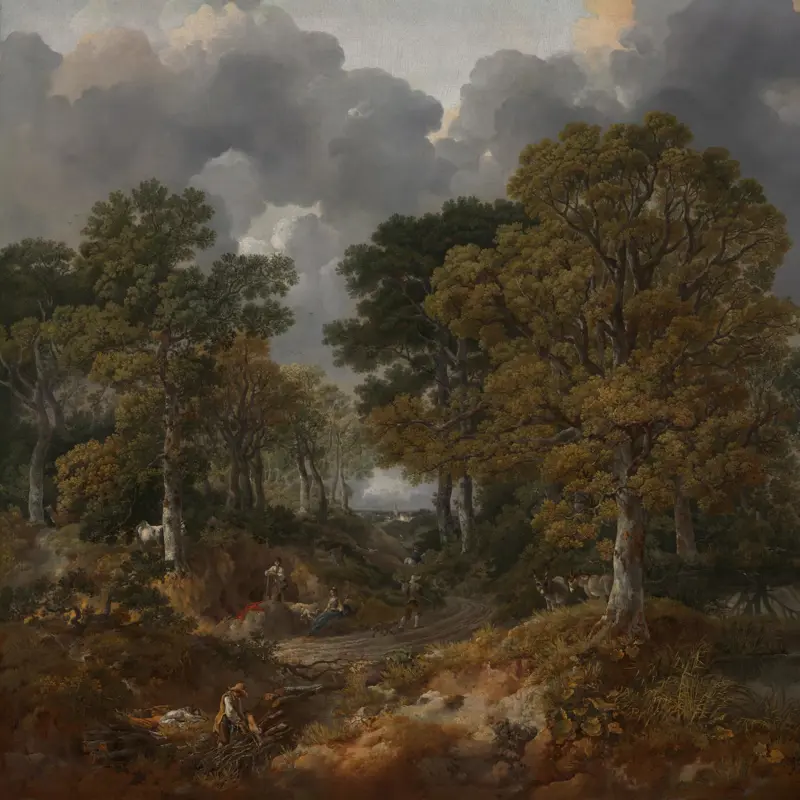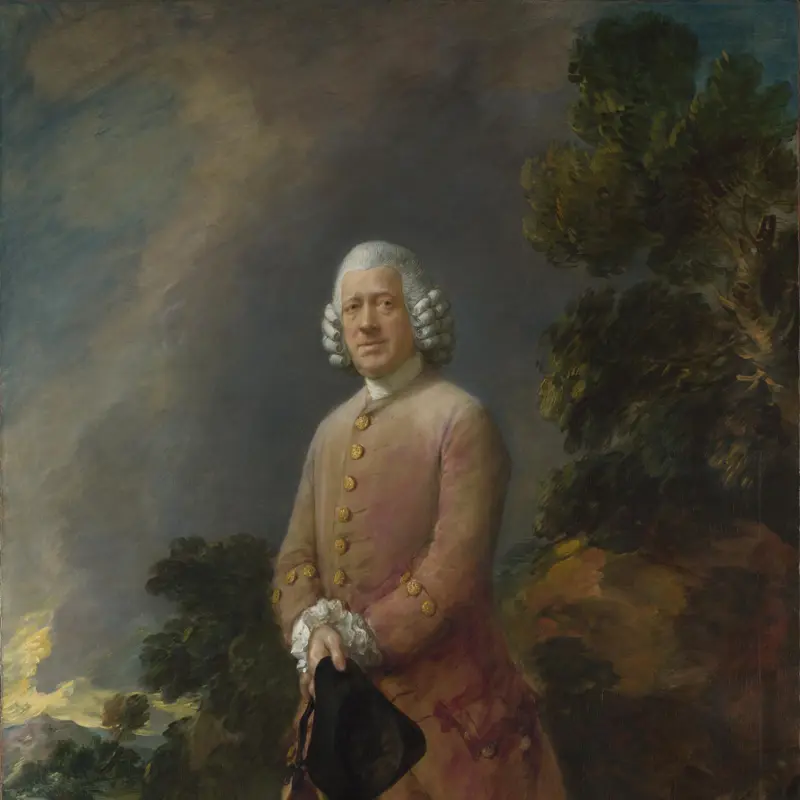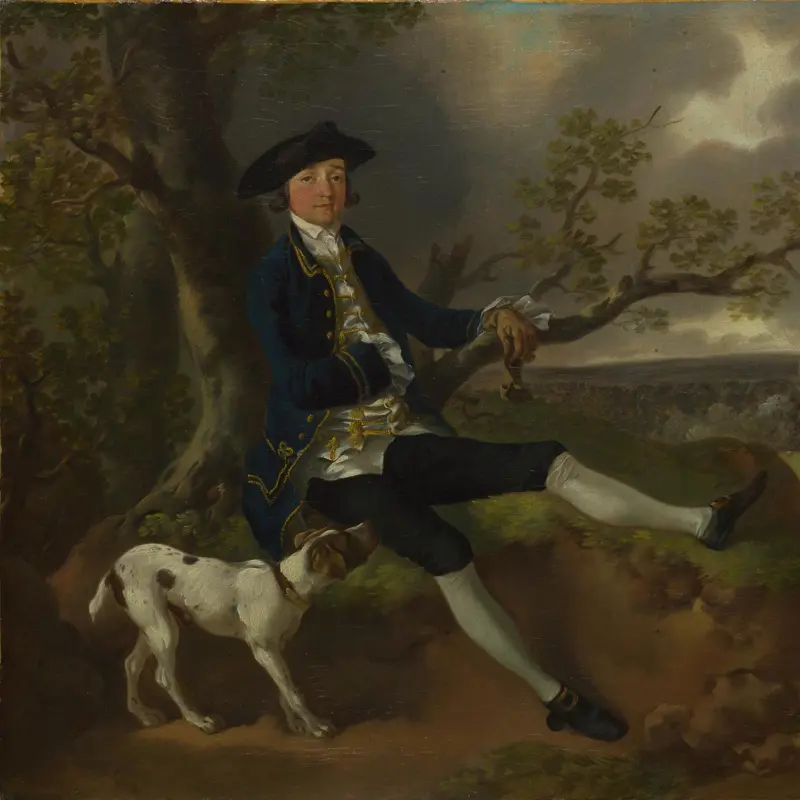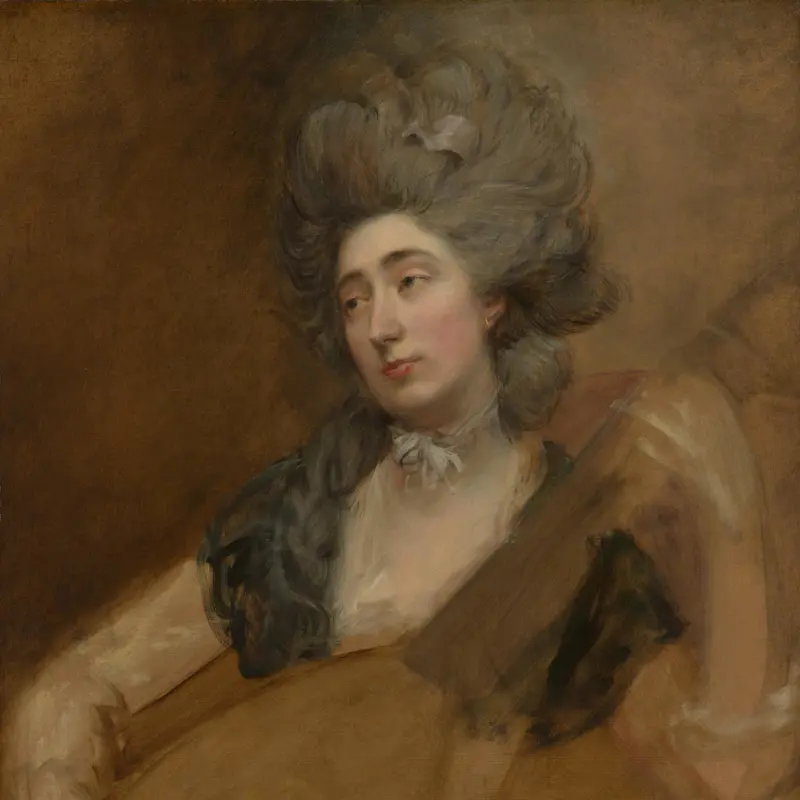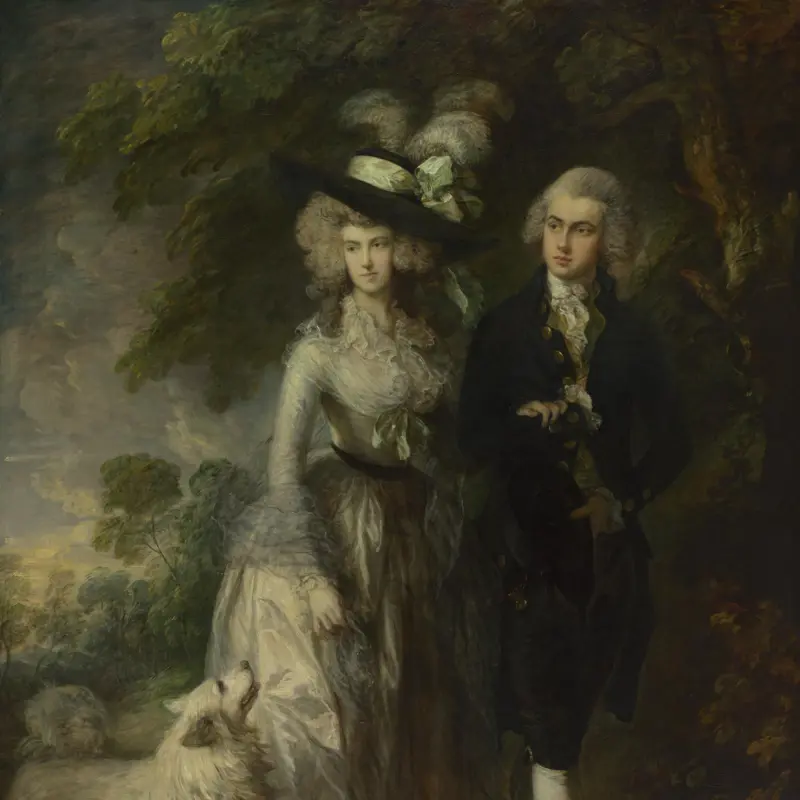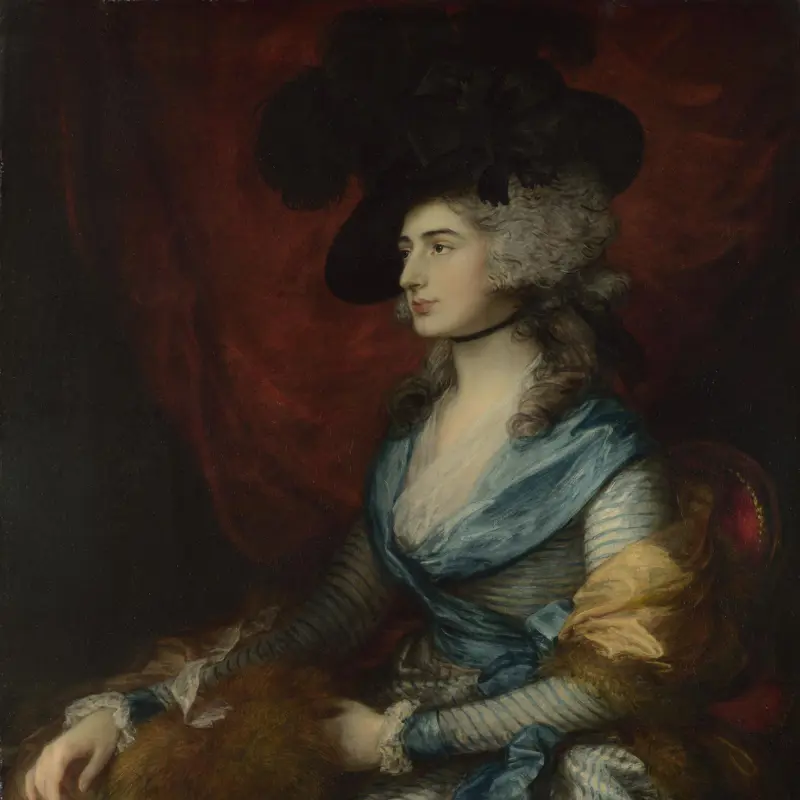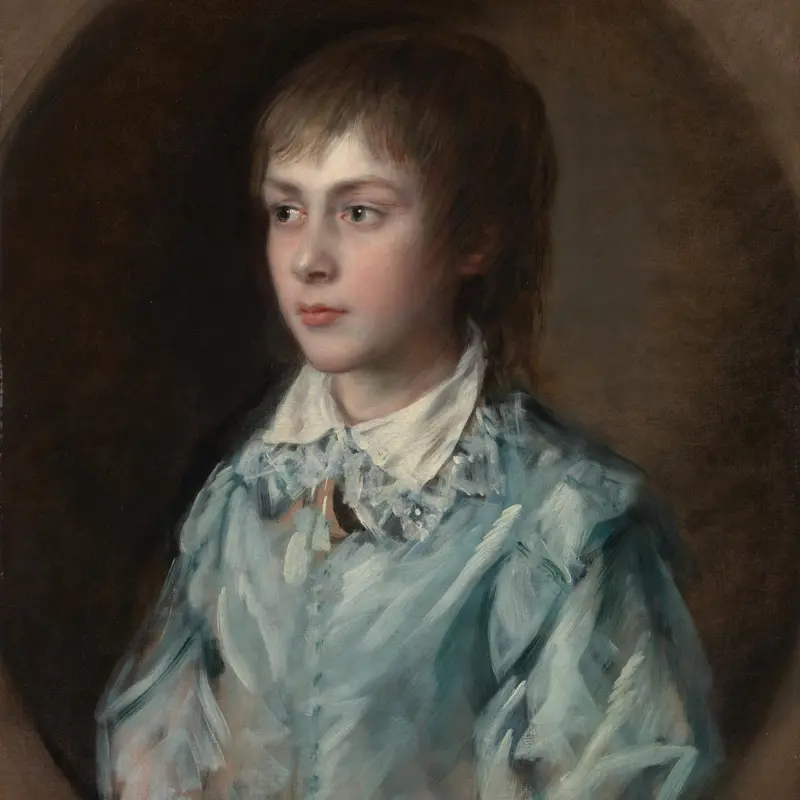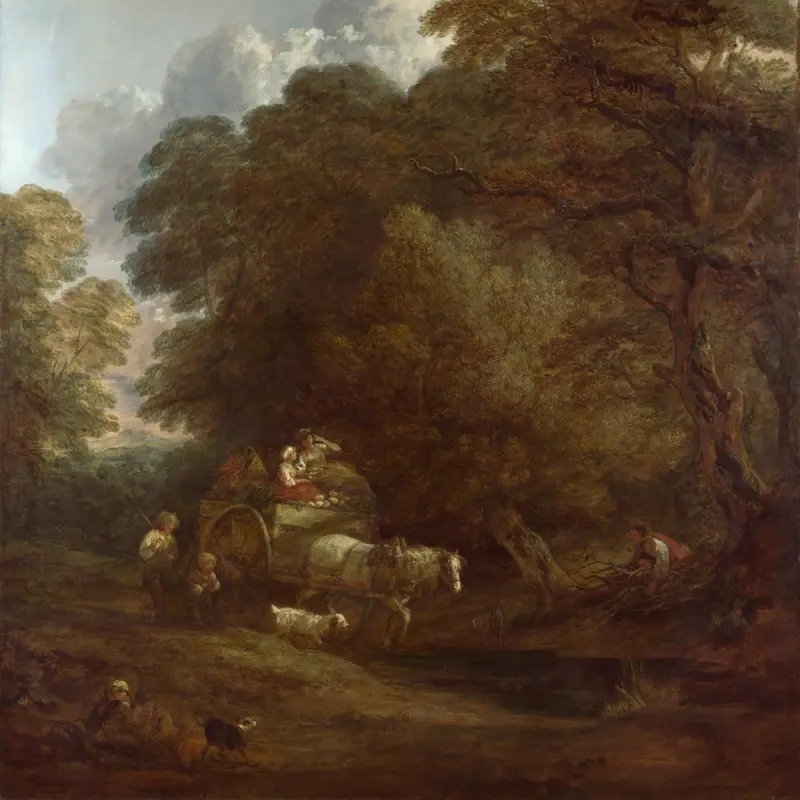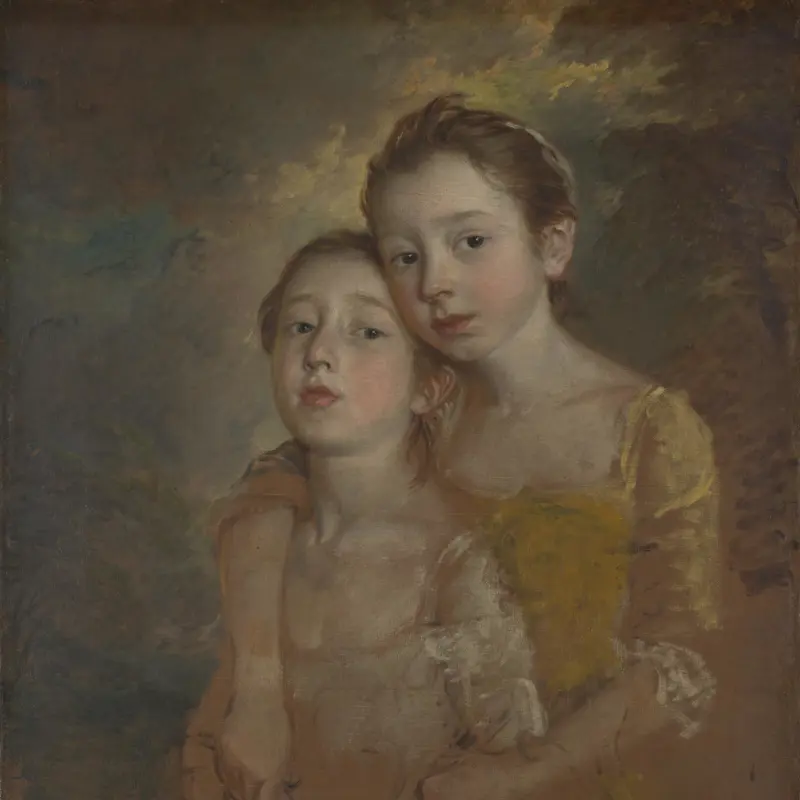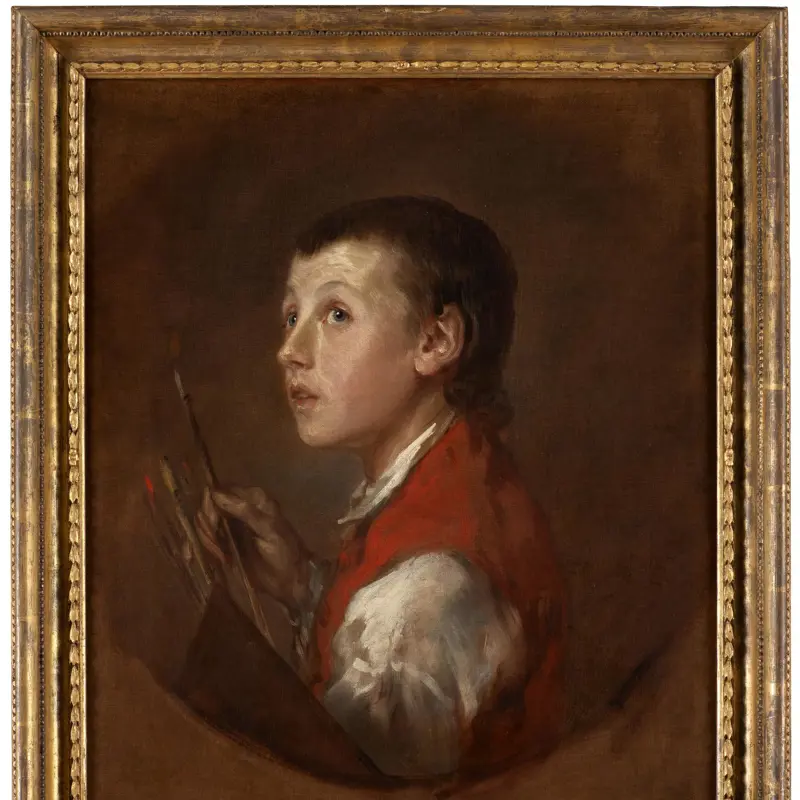Thomas Gainsborough, 'Portrait of the Artist with his Wife and Daughter', about 1748
About the work
Overview
This is the earliest known self portrait in oil by Gainsborough, and the only known one of him with his family. He sits with his wife, Margaret, and the little rosy-cheeked girl is probably Mary, their short-lived first daughter. It is likely Gainsborough began it before Mary’s burial on 1 March 1748, when he was not yet 21, and his wife Margaret was a year or so younger.
Gainsborough portrays himself in a relaxed cross-legged pose, with one button of his waistcoat undone to suggest his elegant lack of concern with his appearance. He holds a piece of paper which may once have represented a drawing. The paint here and on the child has become transparent with age. Living in London at the time, Gainsborough had some evident difficulties with the landscape as well as with the proportions of the rather stiff-limbed figures. Quite a few changes were made during painting, particularly to Margaret’s pose and dress, and her left hand remains unfinished.
Key facts
Details
- Full title
- Portrait of the Artist with his Wife and Daughter
- Artist
- Thomas Gainsborough
- Artist dates
- 1727 - 1788
- Date made
- about 1748
- Medium and support
- oil on canvas
- Dimensions
- 92.1 × 70.5 cm
- Acquisition credit
- Acquired under the acceptance-in-lieu scheme at the wish of Sybil, Marchioness of Cholmondeley, in memory of her brother, Sir Philip Sassoon, 1994
- Inventory number
- NG6547
- Location
- Room 34
- Collection
- Main Collection
- Frame
- 18th-century English Frame
Provenance
Additional information
Text extracted from the ‘Provenance’ section of the catalogue entry in Judy Egerton, ‘National Gallery Catalogues: The British Paintings’, London 2000; for further information, see the full catalogue entry.
Exhibition history
-
2013Masterpieces: Art and East AngliaSainsbury Centre for Visual Arts14 September 2013 - 24 February 2014
-
2018Gainsborough's Family AlbumNational Portrait Gallery (London)22 November 2018 - 3 February 2019Princeton University Art Museum23 February 2019 - 9 June 2019
-
2023The SassoonsThe Jewish Museum (New York)3 March 2023 - 13 August 2023
Bibliography
-
1885F.G. Stephens, Exhibition of the Works of Thomas Gainsborough, R.A. and a Collection of Drawings by the Late Richard Doyle, London 1885
-
1898W. Armstrong, Gainsborough and His Place in English Art, London 1898
-
1923W.T. Whitley, 'The Gainsborough Family Portraits', The Studio, 1923, pp. 162-7
-
1936S. Sitwell, Conversation Pieces, London 1936
-
1982J.T. Hayes, The Landscape Paintings of Thomas Gainsborough: A Critical Text and Catalogue Raisonné, Ithaca 1982
-
1987B. Allen, Francis Hayman (exh. cat. Yale Center for British Art, 1 April - 31 May 1987; Kenwood House, 24 June - 30 September 1987), New Haven 1987
-
1988E. Einberg and J. Egerton, The Age of Hogarth: British Painters Born 1675-1709, London 1988
-
1991M. Cormack, The Paintings of Thomas Gainsborough, Cambridge 1991
-
1991D. Tyler, 'Thomas Gainsborough's Daughters', Gainsborough's House Society Annual Report, 1991, pp. 50-66
-
1992D. Tyler, 'The Gainsborough Family: Births, Marriages and Deaths Reexamined', Gainsborough's House Review, 1992, pp. 27-32, 38-54
-
1992D. Tyler, 'Thomas Gainsborough's Days in Hatton Garden', Gainsborough's House Review, 21, 1992, pp. 27-32
-
1994National Gallery, The National Gallery Report: April 1993 - March 1994, London 1994
-
1994Christie's, Works of Art from Collections of the Cholmondeley Family and the Late Sir Philip Sassoon, Bt., from Houghton, London, 8 December 1994
-
1995S. Sloman, 'Mrs Margaret Gainsborough: "A Prince's Daughter"', Gainsborough's House Review, 1995, pp. 47-58
-
1997S. Foister, 'Young Gainsborough and the English Taste for Dutch Landscape', Apollo, CXLVI/426, 1997, pp. 3-11
-
1997O. Meslay, 'The Youthful Gainsborough and French Art', Apollo, 1997, pp. 12-8
-
1997S. Foister, R. Jones and O. Meslay, Young Gainsborough (exh. cat. The National Gallery, 29 January - 31 March 1997; Norwich Castle Museum & Art Gallery, 19 April - 15 June 1997; Laing Art Gallery, 21 June - 17 August 1997), London 1997
-
1998J. Egerton, The British School, London 1998
-
2000Egerton, Judy, National Gallery Catalogues: The British Paintings, revised edn, London 2000
-
2001
C. Baker and T. Henry, The National Gallery: Complete Illustrated Catalogue, London 2001
About this record
If you know more about this work or have spotted an error, please contact us. Please note that exhibition histories are listed from 2009 onwards. Bibliographies may not be complete; more comprehensive information is available in the National Gallery Library.

